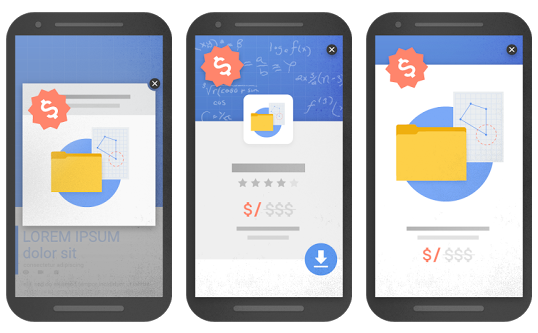Google Pop-Up penalty | Weboptim
Google announced in August 2016 that it would start devaluing the rankings of sites that distract users with pop-up windows or interstitial ads.
Interstitial ads are those ads that not only pop up after the page loads, but until you close them, they don't let you read the content.
The update came into force on 10 January 2017.
Pages where content is difficult to access because of pop-up windows will rank lower in mobile search results. Google recommends using pop-up windows on mobile pages that only take up a "reasonable" part of the screen.
Google has given site owners plenty of time to prepare for the update, but if you haven't already, we've got 10 tips to ensure your website doesn't get penalised by pop-ups.
What pop-ups and ads does Google penalize?
- Thieving pop-up windows, which obscure the main content, whether they appear immediately or only while you are viewing the page.
- So forced advertisingwhich the user must close to access the content.
- So display mode, where the content is reduced to below the fold because the pop-up appears above the fold.

What Google claims it will not like: pop-up, interstitial, almost interstitial.
3 reasons why Google penalises sites that use large-screen pop-ups
- The main content is blocked - thanks to the smaller screen size of mobile devices, the main content of the website can be obscured by pop-up windows. This is very annoying on mobile.
- Bad user experiences - sites that have pop-up windows provide a worse user experience than those where content is easily accessible.
- Accidental clicks on the ad - these annoying ads and notices take over the whole page and have the smallest possible reject button, so it is inevitable that the user will accidentally click on the ad even though they don't want to.
Who benefits from the penalty?
The biggest benefit of penalising pop-ups will be for visitors, as they will find the content they are looking for more easily. Forced pop-ups will no longer be a nuisance. No more forced newsletter sign-ups or accidental call-to-action button clicks.
Who will be worse off because of the penalty?
Thanks to the fear of lower rankings, the concern will be quite high. They may worry:
- Online online stores
- Marketers and bloggers
- People using AdFly
- Extensions as Pop-up
- Life coaches
- and many others
In the case of domestic online shops, pop-ups that do not appear according to the user's intentions, but instead warn of, for example, holiday opening hours or promotions, can be a problem.
You will not be penalised:
- Pop-up windows that are legal obligations include e.g. use of cookies
- Login dialog boxes, where the content is not public, not indexed.
- Banners that are they are not hidden a significant part of the site, can also stay.

What will remain: cookie info, age rating, protection of non-public content, and no penalty for small banners.
How can we avoid a penalty?
Google advice
A Google as follows defines a penalty: "To improve the mobile search experience, after January 10, 2017, pages where content is not easily accessible to a user on the transition from the mobile search results may not rank as highly."
Lesson learned: The content of a page indexed on mobile should be easily accessible and readable when the user clicks through to the page via Google search.
Do Pop-up windows serve a purpose?
An professionals said: 'The easiest way to avoid mobile interstitial and pop-up penalties is to think like Google, whose main goal is to make the internet more accessible, browsable, intuitive and honest, especially for mobile browsers. This means that, with a few exceptions, Google's pop-up policy is: If your pop-up serves a real, honest purpose, you're likely to be fine.
Lesson learned: Some pop-up windows are still acceptable if they either serve legal requirements (such as age rating) or do not distract from the main content (such as a small banner at the top of the page).
Hiding content with ads is against the guidelines
A in most cases Google's update targets pages where content below pop-up windows is greyed out by page owners to prevent you from reading the text, even if it's just for a few seconds, or until you find the exit button and carefully click the small X.
Lesson learned: Editors are not happy about this, but ads that appear above the main content are no longer acceptable. This includes ads that appear when you arrive on the page, as well as ads that appear when you scroll down. We cannot put any barriers in the way of users accessing content.
Advertisers need to adapt and look for a new strategy
If they haven't already, marketers should first mobile SEO questions they need to solve. The pain that comes with change is inevitable, but short term - businesses need to find a way to make money without disrupting the user experience:
Lesson learned: Removing revenue-generating interstitial ads may hurt at first, but losing organic search results would hurt even more. So site owners need to adapt and look for a non-intrusive way to generate revenue.
Developing a marketing strategy
Creating and distributing relevant content consistently attracts visitors even without with sales windows we would bomb them. Use content - blog posts, tutorials, videos, infographics, etc. - to educate your audience and guide them through the buying process.
Lesson learned: Since Google's aim with the penalty is to make content more accessible, let's take advantage of this. You need to develop a good marketing strategy on how to sell your product/service to users, rather than influencing them with intrusive pop-ups.

The mobile-friendly label is gone, but the mobile-friendly feature still counts
A first part of notification was - and a lot of readers skipped over it - that the mobile-friendly tag that Google displayed next to search results was discontinued on January 10. Since over 85% of mobile search results meet this criterion, the tag has been removed for all of them.
Lesson learned: Google will then no longer take into account whether the pop-up window pages are mobile-friendly or not, but don't panic if you don't see the mobile-friendly tag next to the content when you search. The tag has been removed, but the mobile-friendly feature remains as important as before.
Intrusive interstitial is not allowed on mobile, but it is on desktop
Use display hint for pop-up windows, and only show them on a desktop/larger screen. Do not use them on mobile. Instead, opt for smaller messages such as banners, slides or row ads.
Lesson learned: You do not need to remove pop-up windows and interstitial ads completely, only for mobile sites. On desktops they can still appear without any penalty.
Check your WordPress plugins
Wordpress users who use the pop-up windows whether they are coupons, promotions, etc... carefully read Google's guidelines on this or consider a different approach to reaching visitors.
Lesson learned: If you use a WP plugin for display, please follow the new Google guidelines. Remember, pop-ups should be small and not distracting. It is important that the content is the focal point of the page.
Pop-up windows before exit are still allowed
At this moment they are do not count. What you really need to watch out for are pop-up windows that show interaction between search clicks and page views. So these are the places to watch out for pop-ups. What we do after that (if someone clicks on something within the website or wants to close a tab) is between the user and us.
Lesson learned: The pop-up windows that appear before closing are still working perfectly. Google now only targets ads that appear when the user lands on the page.
Side-to-side pop-ups are not penalised
Google does not monitor every page with a pop-up window, only those that the user arrives at from search engines. We are allowed to display pop-ups when a user navigates from one sub-page to another.
Summary
Google is constantly looking for new ways to improve the user experience. The intention behind the devaluation of pop-up window pages is to help the search giant help users find the content they need without being distracted by pop-ups.
Undoubtedly, this will be an adjustment period for website owners who have used pop-ups up to this point, but in the end it could lead to more time on page, more page views and lower bounce rates. So there are both positives and negatives to the update, the main thing is to keep up with the constant Google "hits".
Sources:
webmasters.googleblog.com
www.searchenginejournal.com
www.icegram.com